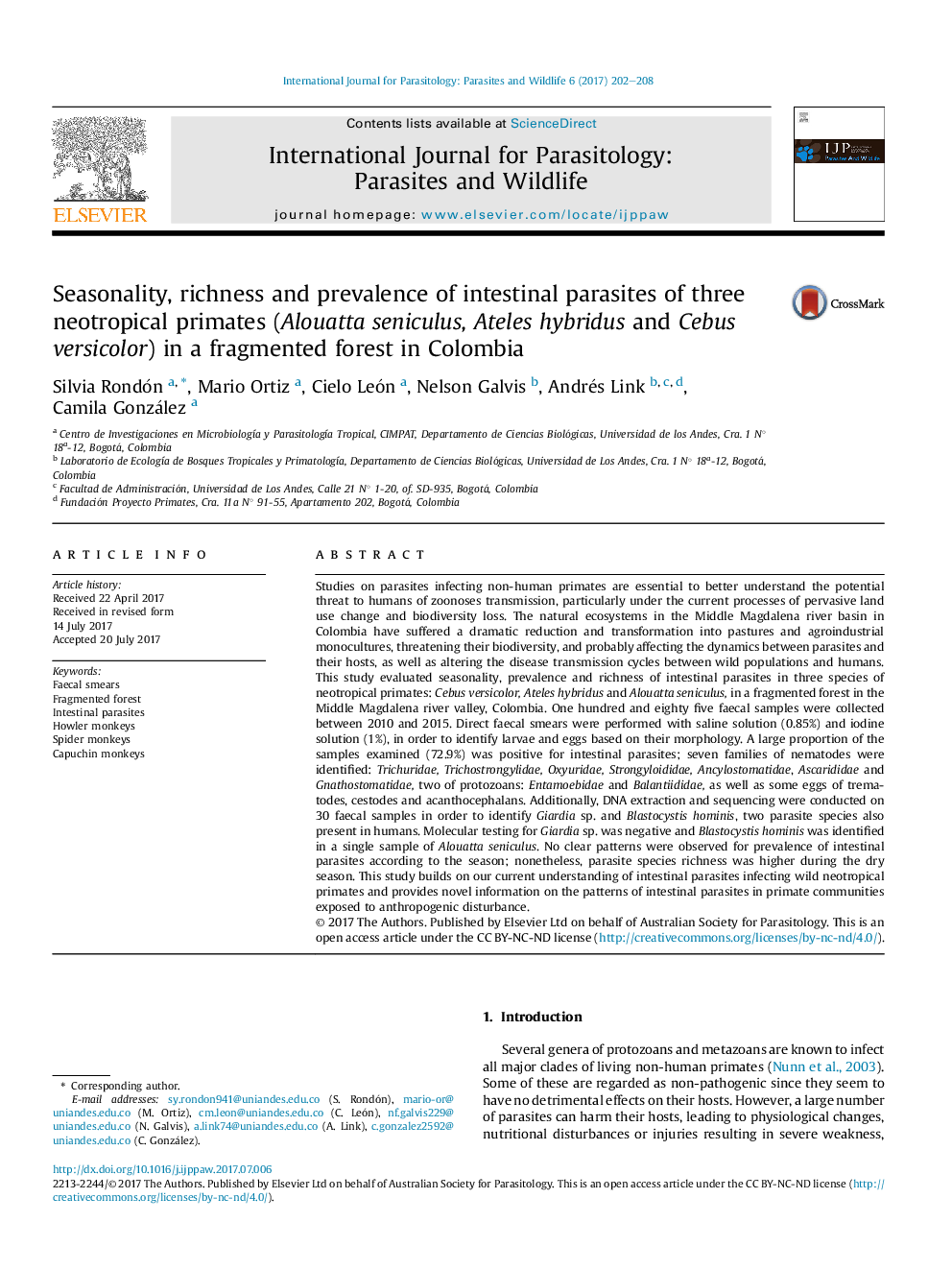| کد مقاله | کد نشریه | سال انتشار | مقاله انگلیسی | نسخه تمام متن |
|---|---|---|---|---|
| 5517895 | 1543811 | 2017 | 7 صفحه PDF | دانلود رایگان |

- Seven families of nematodes, two of protozoans, and some eggs of trematodes, cestodes and acanthocephalans were found.
- Sequencing confirmed the presence of Blastocystis hominis, while molecular testing for Giardia sp. was negative.
- No clear patterns were observed regarding seasonality of gastrointestinal parasites in the studied primate species.
- Prevalence of parasites was higher in the dry season, while richness of parasites had variations among species and seasons.
- Differences in parasite prevalence were found between non-human primate species according to their diet and habits.
Studies on parasites infecting non-human primates are essential to better understand the potential threat to humans of zoonoses transmission, particularly under the current processes of pervasive land use change and biodiversity loss. The natural ecosystems in the Middle Magdalena river basin in Colombia have suffered a dramatic reduction and transformation into pastures and agroindustrial monocultures, threatening their biodiversity, and probably affecting the dynamics between parasites and their hosts, as well as altering the disease transmission cycles between wild populations and humans. This study evaluated seasonality, prevalence and richness of intestinal parasites in three species of neotropical primates: Cebus versicolor, Ateles hybridus and Alouatta seniculus, in a fragmented forest in the Middle Magdalena river valley, Colombia. One hundred and eighty five faecal samples were collected between 2010 and 2015. Direct faecal smears were performed with saline solution (0.85%) and iodine solution (1%), in order to identify larvae and eggs based on their morphology. A large proportion of the samples examined (72.9%) was positive for intestinal parasites; seven families of nematodes were identified: Trichuridae, Trichostrongylidae, Oxyuridae, Strongyloididae, Ancylostomatidae, Ascarididae and Gnathostomatidae, two of protozoans: Entamoebidae and Balantiididae, as well as some eggs of trematodes, cestodes and acanthocephalans. Additionally, DNA extraction and sequencing were conducted on 30 faecal samples in order to identify Giardia sp. and Blastocystis hominis, two parasite species also present in humans. Molecular testing for Giardia sp. was negative and Blastocystis hominis was identified in a single sample of Alouatta seniculus. No clear patterns were observed for prevalence of intestinal parasites according to the season; nonetheless, parasite species richness was higher during the dry season. This study builds on our current understanding of intestinal parasites infecting wild neotropical primates and provides novel information on the patterns of intestinal parasites in primate communities exposed to anthropogenic disturbance.
293
Journal: International Journal for Parasitology: Parasites and Wildlife - Volume 6, Issue 3, December 2017, Pages 202-208